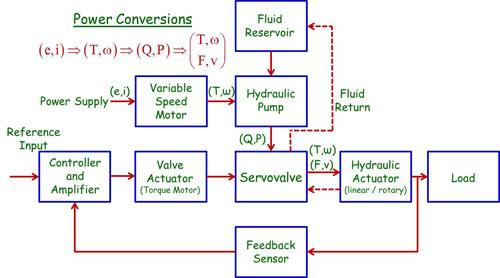Fluid Power Systems: The Hidden Giant
June 18, 2012

Faster than a speeding bullet -- almost. More powerful than a locomotive -- most definitely. Able to leap tall buildings in a single bound -- certainly possible. And unnoticed by the casual observer. Fluid power systems should have a Superman logo inscribed on them. This pervasive, hidden technology is based on a simple principle that leads people to think that implementation of fluid power is just a "select, assemble, and run" task. Nothing could be more untrue!
At the end of the 19th century, in response to the need to transmit power more effectively from one point to another, hydraulic systems replaced traditional mechanical systems. During the Industrial Revolution, the development of fluid power was emphasized, but most applications were steady in nature and required only static considerations for design.
At the beginning of the 20th century, hydraulic control system development experienced a major setback, followed by decades of stagnation, with the phenomenal growth of electrical power. The stagnation ended as World War II drove the need for power transmission characterized by high effort and fast response, which only hydraulic systems could provide because of their superior power density compared to electrical devices. Over the next 40 years, industry was the steward of technology for the fluid power world. There is a resurgence of interest in fluid power control systems at universities, and industry/university collaboration is growing.

Unfortunately, fluid power is often considered a specialist subject. In applications where large forces/torques are required, with a fast response time and high accuracy, hydraulic control systems are essential. They have a more competitive power-weight ratio than electrically actuated systems, which are limited by magnetic saturation, and they excel in environmentally difficult applications. In addition, the hydraulic medium is mechanically stiffer than the electromagnetic medium. Self-lubrication and inherent heat transfer are also advantages.
Fluid power applications are numerous. For example, vehicle steering, braking, and suspension systems; industrial mechanical manipulators and robots; and actuators for aircraft and marine vessels, to name a few. They are all multidisciplinary systems and require a systems approach to design and implement. Engineering background required includes fluid mechanics, electro-mechanics, system dynamics, computer control systems, and electronics -- a mechatronics background.
The diagram shows a basic hydraulic control system. Note the power conversions that occur throughout the system. The hydraulic fluid is pressurized by a pump, driven by a variable-speed motor. The pressure of the fluid is regulated and stabilized by a relief valve and an accumulator (not shown). A servovalve, driven by an electric valve actuator, provides a controlled supply of fluid into the actuator (either a piston-cylinder device or a hydraulic motor), controlling both flow rate and pressure. Low-pressure fluid from the servovalve is filtered and returned to the reservoir. A feedback digital control system completes the system.
Today, the competitive advantage of fluid power is greatest in mobile applications (for example, mobile heavy equipment, human-assist devices, mobile human-scale equipment, and hydraulic hybrid passenger vehicles) where fluid power can be a compact, efficient, and effective source of energy transmission. The opportunities are great for the mechatronics engineer in this re-emerging field.
Related posts:
About the Author(s)
You May Also Like



